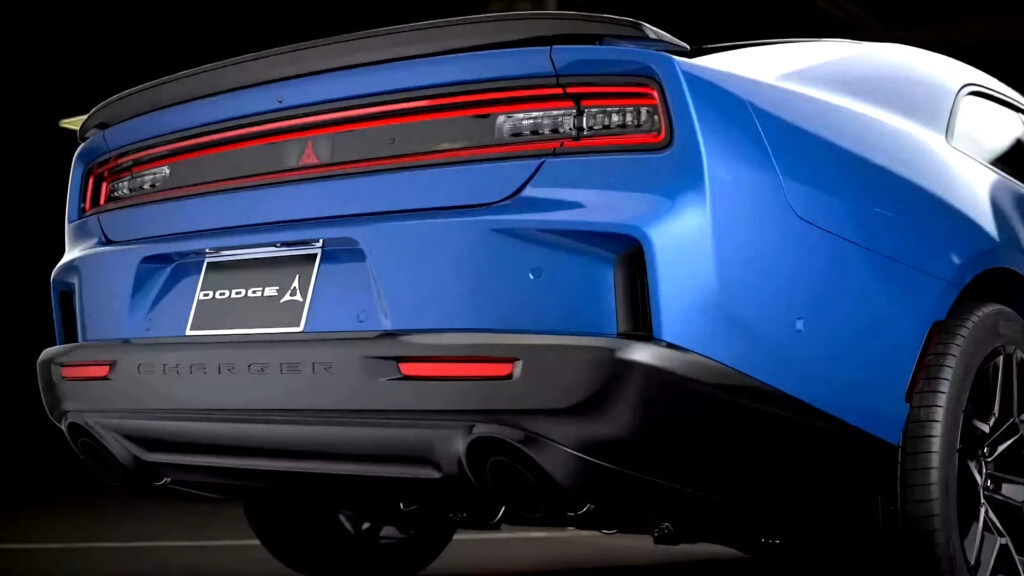What’s Behind Dodge’s New Outlaw Name for the Charger?
Dodge has never been shy about tapping into its muscle car roots, but this time, the brand is shaking things up with a name that’s never graced its lineup before: Outlaw. If you’ve been following the latest rumblings in the automotive world, you might have caught wind of Dodge’s recent trademark filings. So, what’s really going on with the new Charger Outlaw, and why does it matter?
Why Is Dodge Introducing the Outlaw Name Now?
For decades, Dodge has played the nostalgia card, dusting off legendary names like Challenger, Daytona, and Super Bee to stir up excitement. But Outlaw? That’s a fresh twist. According to recent filings with the U.S. Patent and Trademark Office, Dodge is locking down both “Outlaw” and “Charger Outlaw” for use on land vehicles—specifically, passenger cars sold through authorized dealerships.
This move signals a shift. Instead of simply recycling old badges, Dodge is carving out a new identity for its next high-performance Charger. The Outlaw moniker hints at a rebellious spirit, a nod to the brand’s muscle car ethos but with a modern edge. It’s a clever way to keep loyalists engaged while attracting a new generation of enthusiasts who want something different from the usual retro fare.
What Engine Will Power the Charger Outlaw?
Here’s where things get really interesting. The Outlaw name is expected to debut on a high-output version of the new Charger, powered by the Hurricane inline-six engine. If you’re not familiar, this engine has already made waves in other Stellantis vehicles, like the latest Ram 1500. In its most potent form, the Hurricane delivers a whopping 540 horsepower and 521 lb-ft of torque—numbers that put it squarely in muscle car territory.
Why not use the tried-and-true V8? Emissions regulations and fuel economy standards are tightening, and automakers are under pressure to innovate. The Hurricane inline-six is Dodge’s answer: smaller displacement, twin turbos, and enough grunt to make even the most die-hard V8 fans raise an eyebrow. According to industry insiders, this engine won’t fit in smaller models like the Hornet, and the current Durango isn’t set up for it either. That exclusivity could make the Outlaw even more desirable.
Will the Outlaw Be All-Wheel Drive or Rear-Wheel Drive?
Performance fans, take note: the Charger Outlaw is expected to come standard with all-wheel drive, but with a twist. Dodge is reportedly including a rear-wheel-drive mode, letting drivers unleash all that power to the back wheels when the mood strikes. This dual setup isn’t just a gimmick—it’s a practical way to handle 540 horses in all weather, while still delivering the smoky burnouts and tail-happy antics muscle cars are famous for.
This approach mirrors what we’ve seen from other high-performance brands. BMW’s M5 and Mercedes-AMG’s E63, for example, both offer all-wheel drive with selectable rear-drive modes. It’s a nod to modern engineering without sacrificing the fun factor.
Is the Outlaw Name Exclusive to the Charger?
So far, all signs point to yes. Dodge’s trademark filings cover “Outlaw” and “Charger Outlaw,” but there’s no mention of Durango Outlaw or Hornet Outlaw. That’s telling. The Hurricane engine’s size and power output make it a poor fit for the compact Hornet, and the current Durango platform isn’t up to the task either. Of course, that could change with future redesigns—never say never in the auto industry. But for now, Outlaw looks set to be the flagship badge for the Charger lineup.
Could Outlaw Become the Next Hellcat?
It’s a fair question. The Hellcat badge became synonymous with over-the-top power and attitude, and Dodge milked it for all it was worth. With the industry moving away from supercharged V8s, Outlaw could fill that void—a new-era performance icon for a new set of rules. Will it have the same cultural impact? Only time will tell, but the ingredients are there: exclusive name, big power, and a healthy dose of attitude.
How Does This Fit Into Dodge’s Broader Strategy?
Dodge’s move comes at a pivotal moment. The brand recently shifted gears, ramping up production of gas-powered Chargers after its initial EV plans didn’t generate the expected buzz. It’s a pragmatic response to market realities: muscle car fans still crave the visceral experience of internal combustion, and Dodge isn’t ready to abandon them just yet.
At the same time, the Outlaw name and Hurricane engine show Dodge isn’t stuck in the past. By blending modern tech with classic muscle car values, the brand is hedging its bets—keeping one foot in tradition while stepping boldly into the future.
What Should Enthusiasts Expect Next?
If history is any guide, Dodge will tease the Outlaw for months before pulling the wraps off the production car. Expect plenty of hype, dramatic unveilings, and maybe even a few Easter eggs for the die-hards. The real test will be how the Outlaw drives—and whether it can live up to the legend Dodge is clearly hoping to create.
The big takeaway? The Charger Outlaw isn’t about perfection—it’s about smarter adjustments. Start with one change this week, and you’ll likely spot the difference by month’s end.

